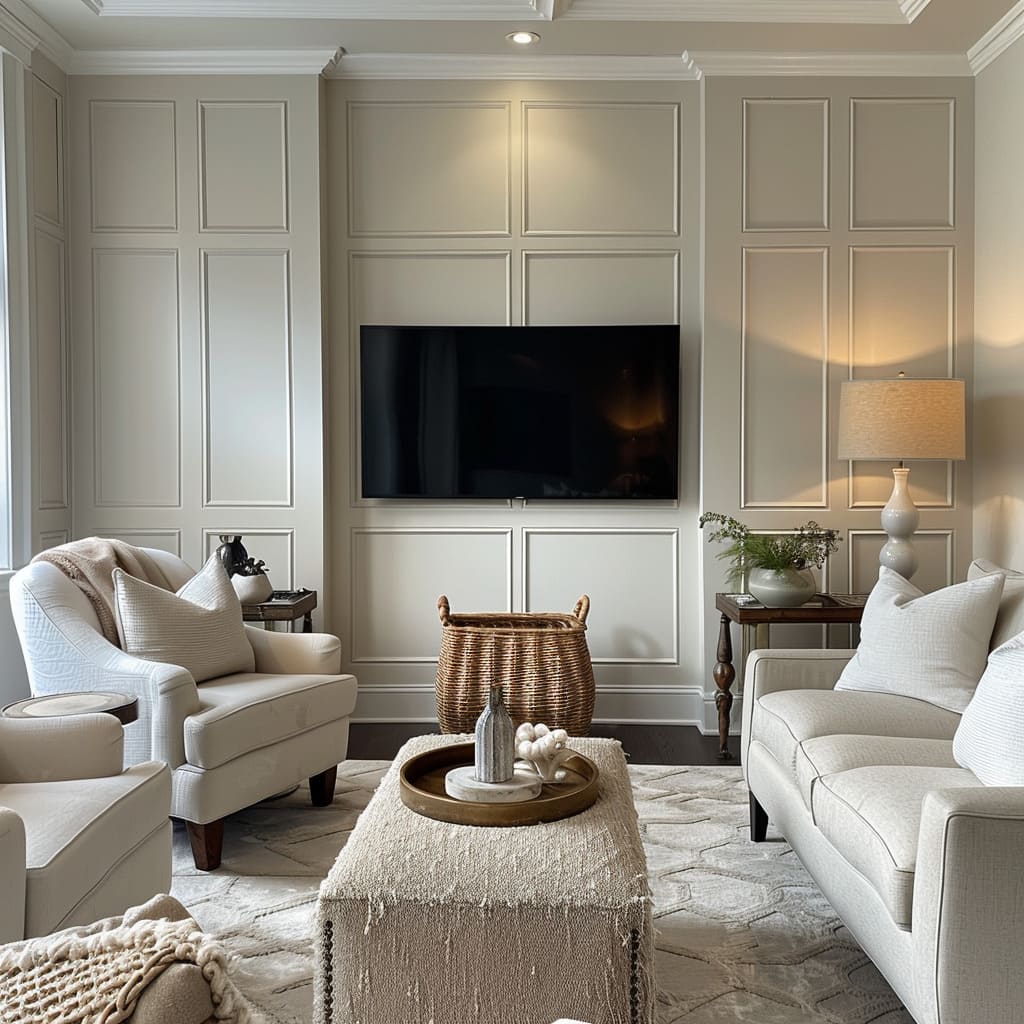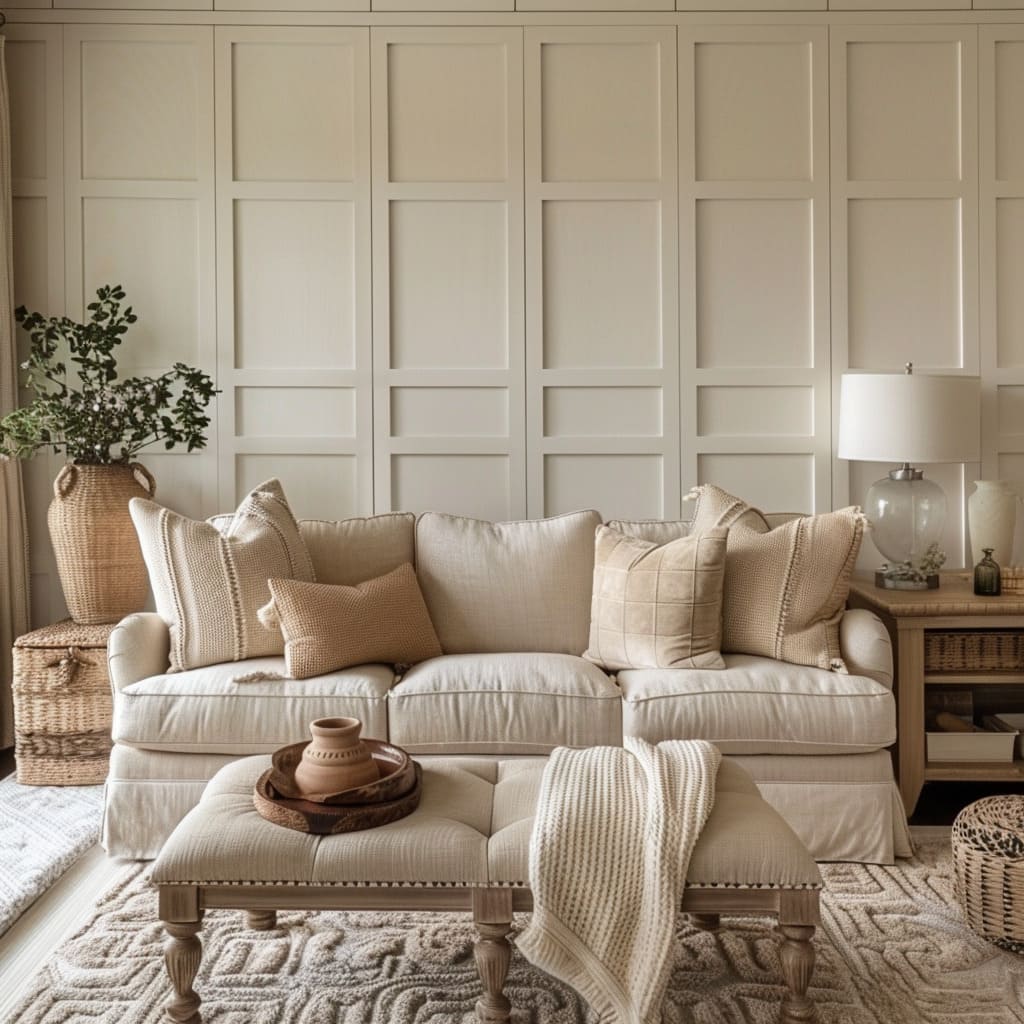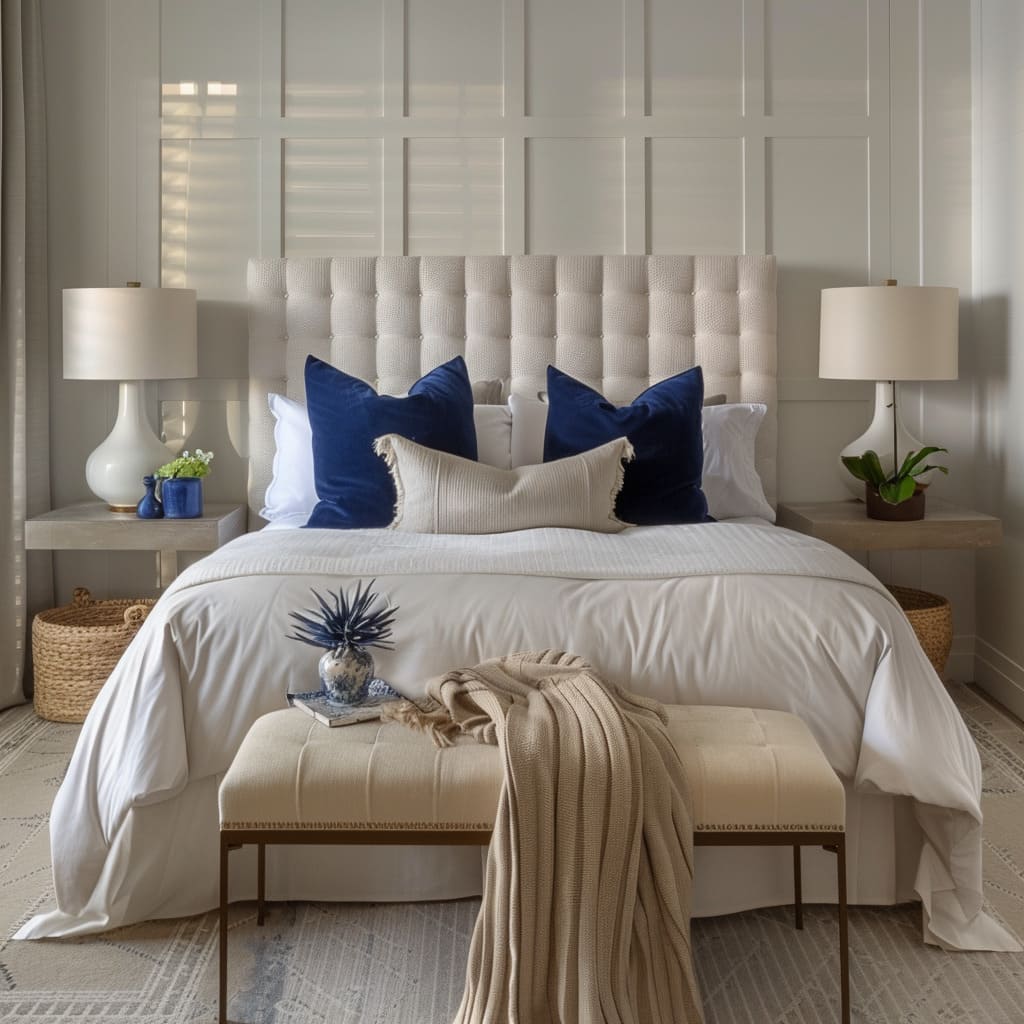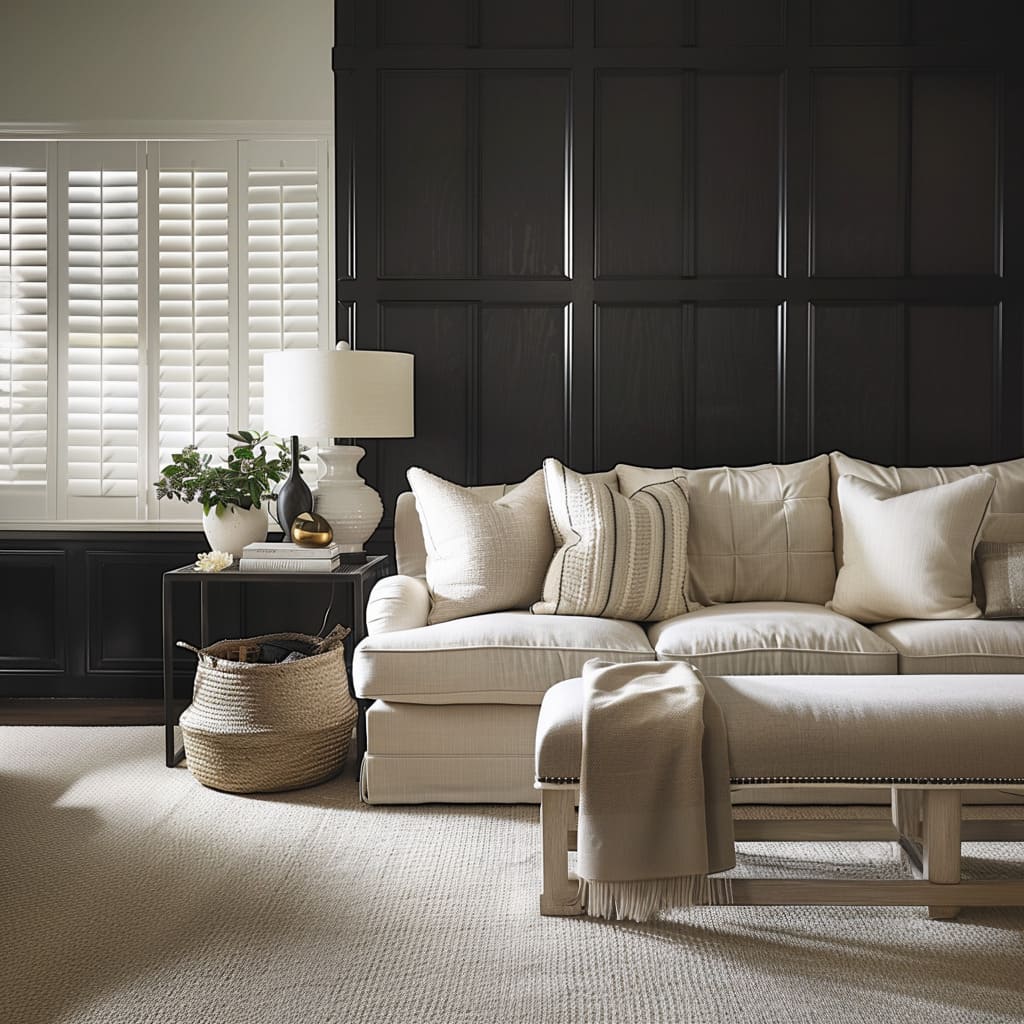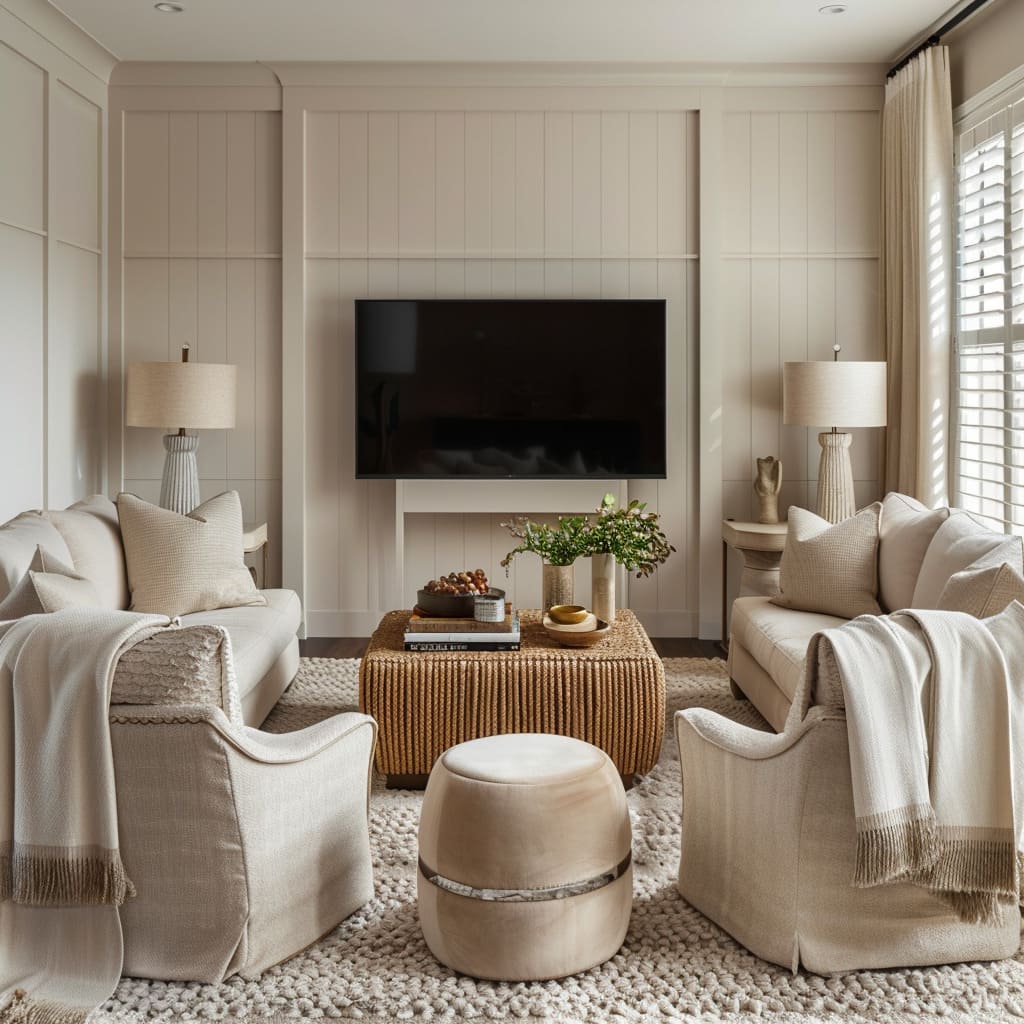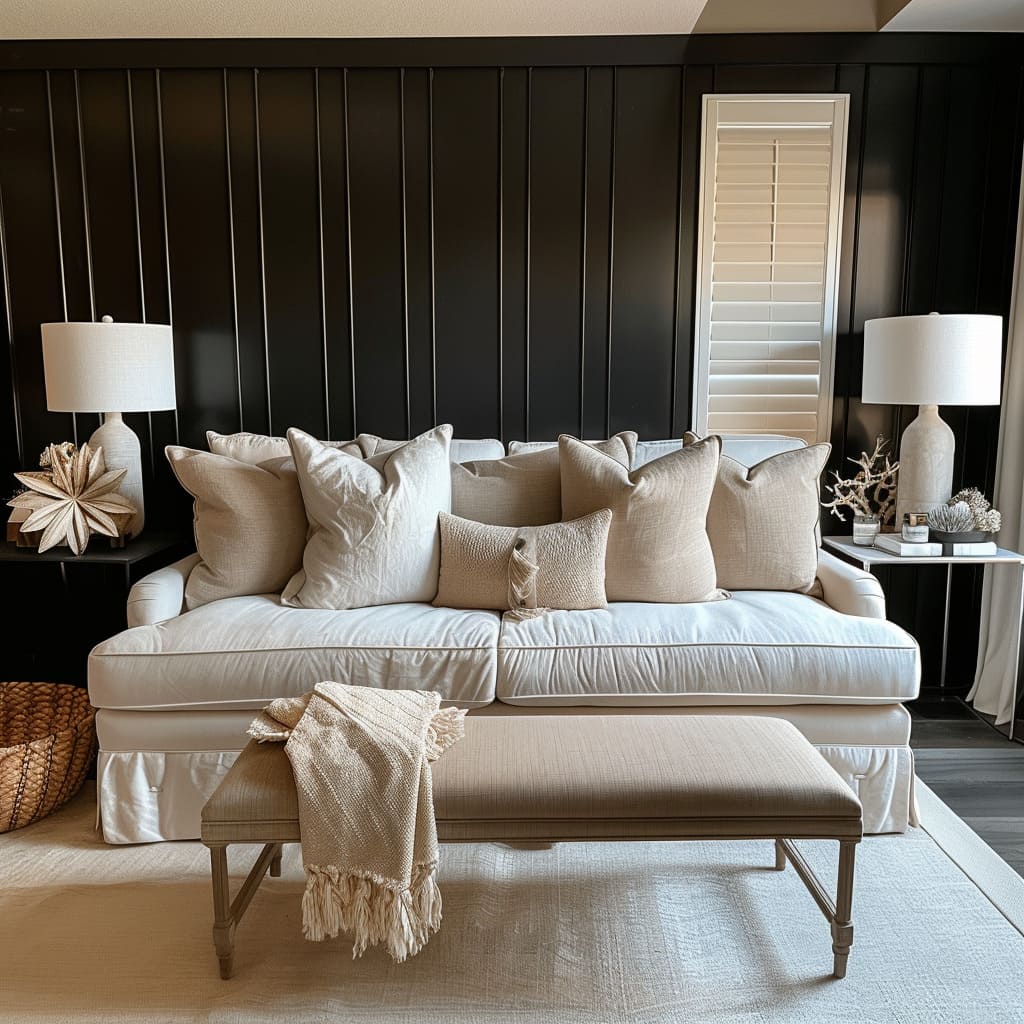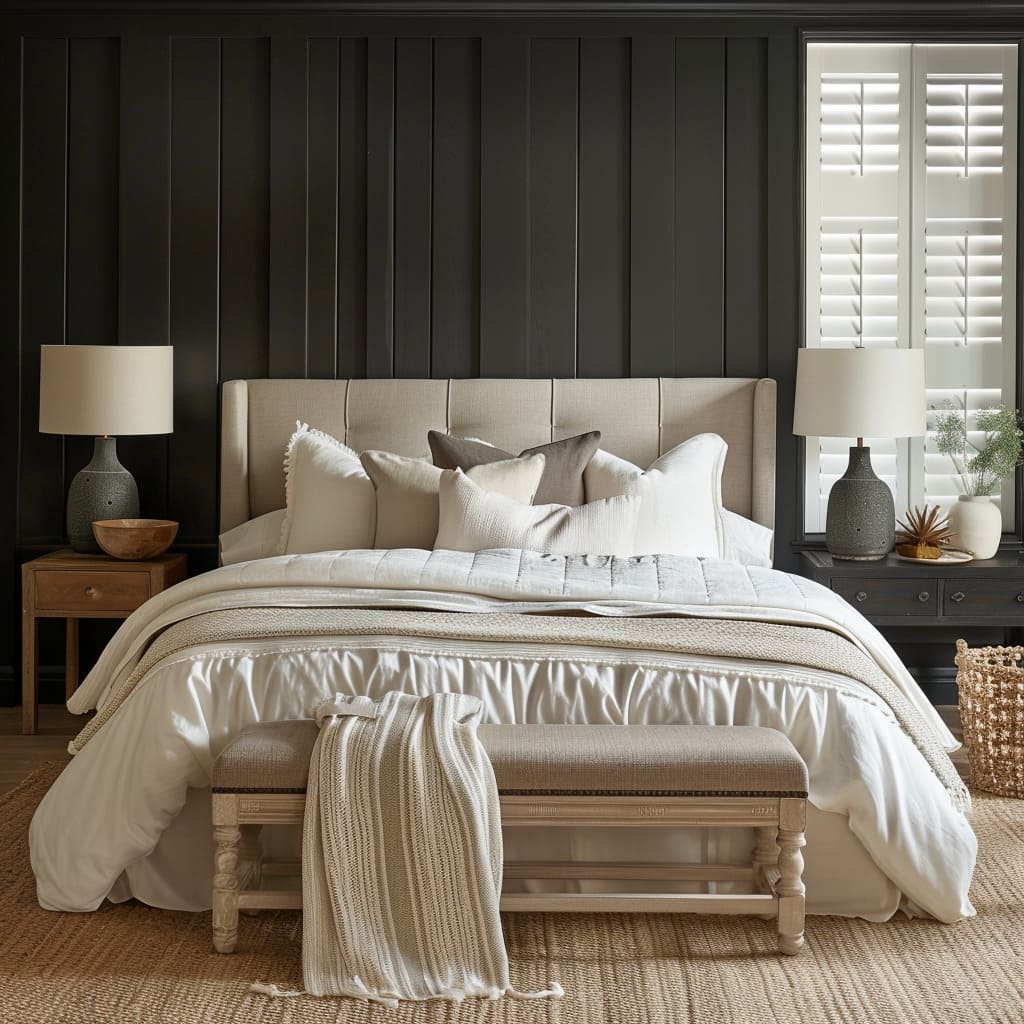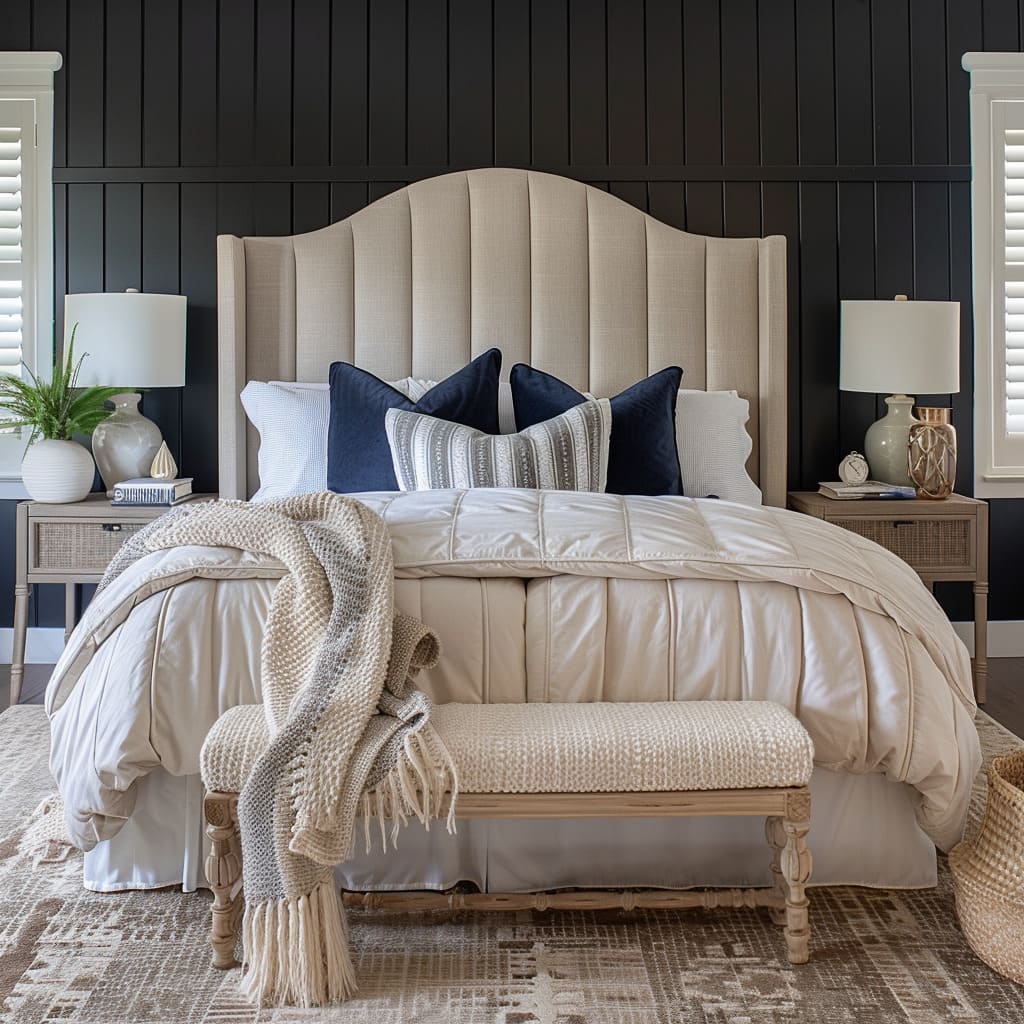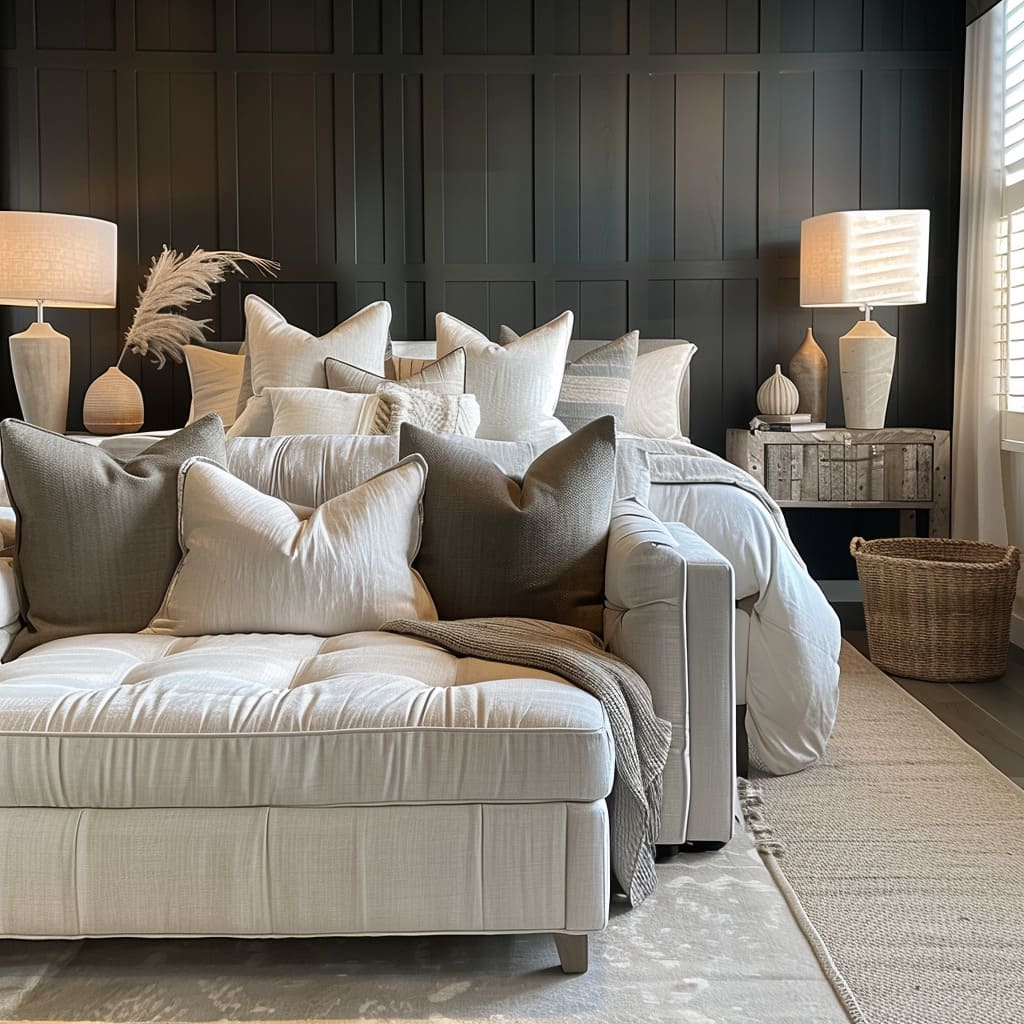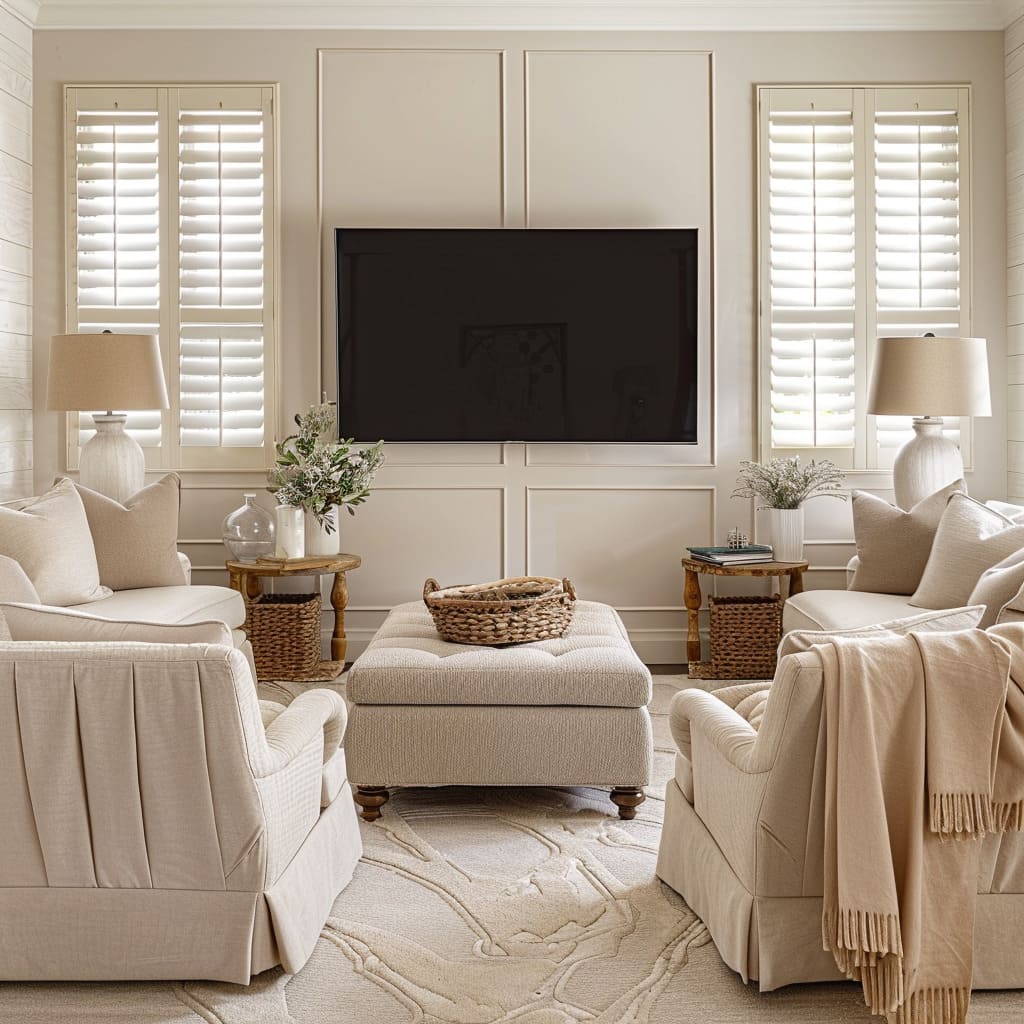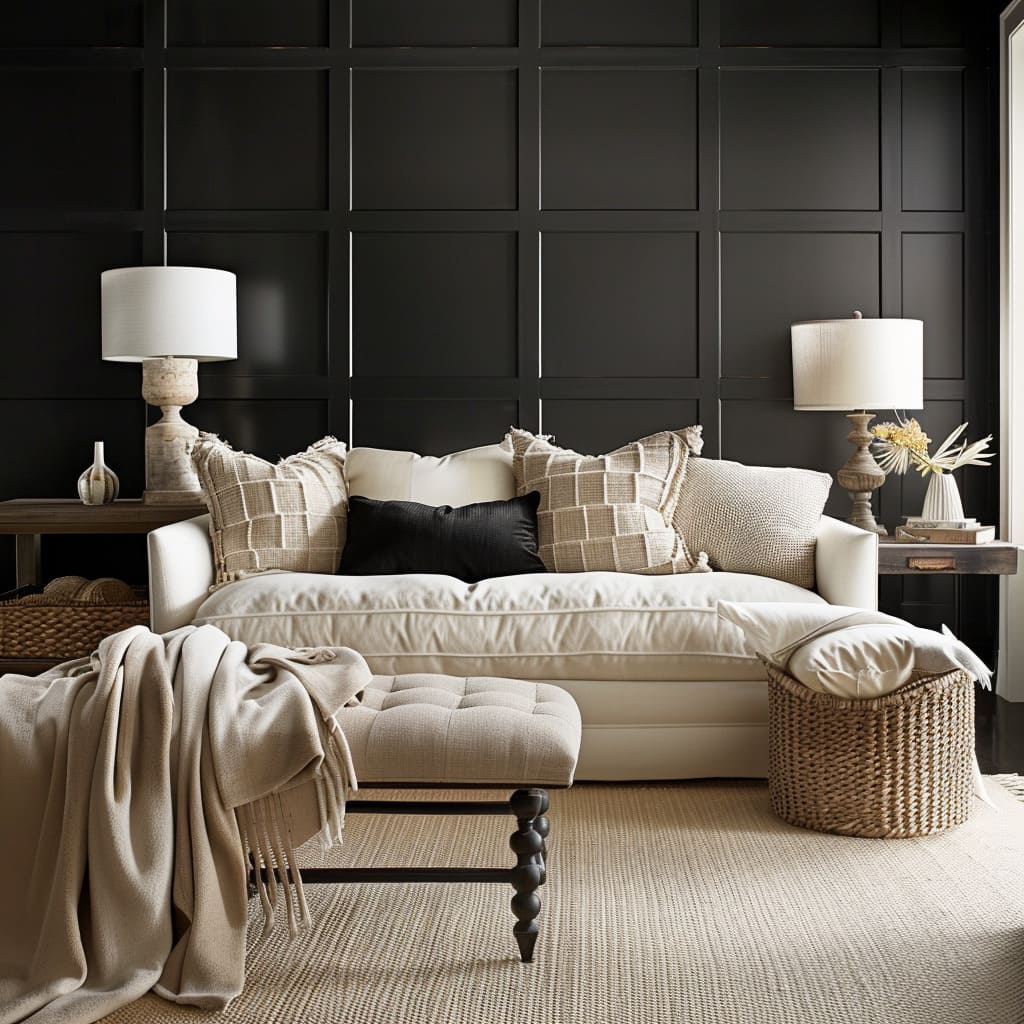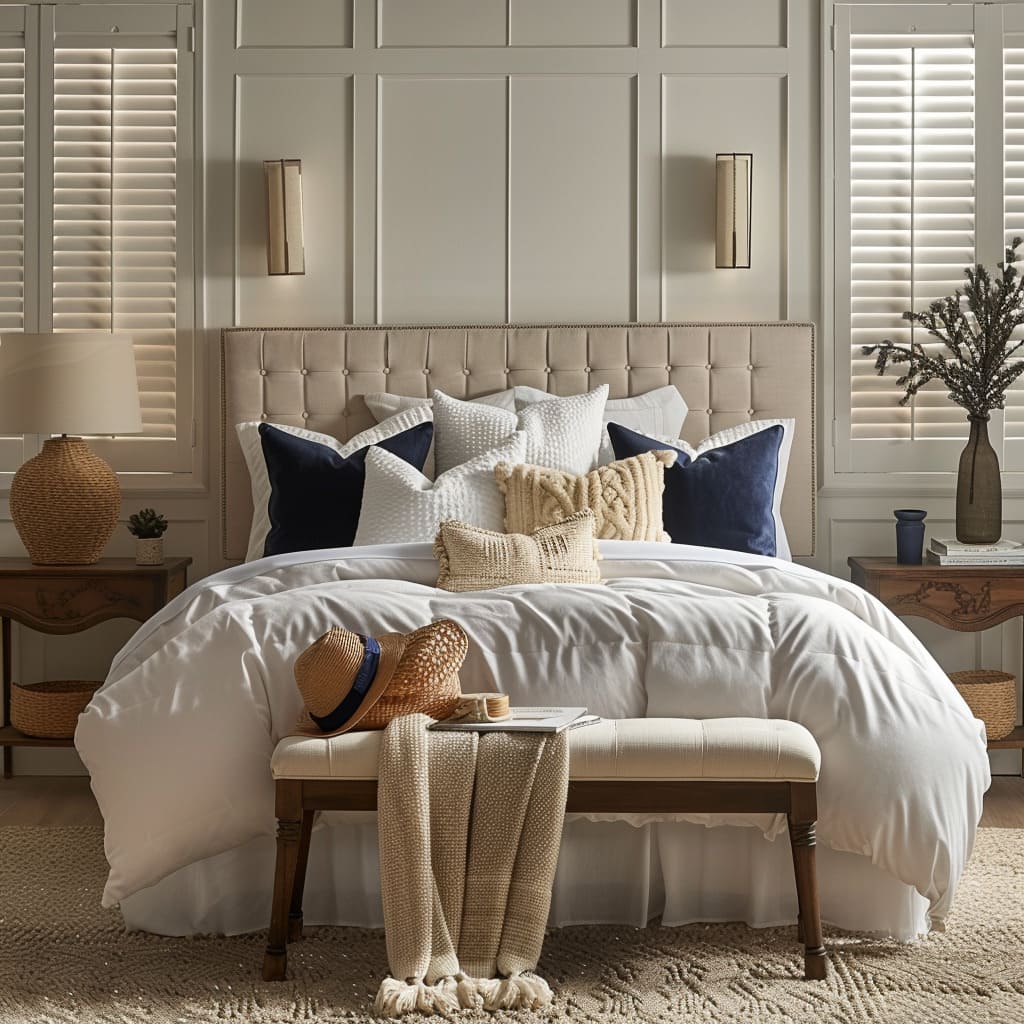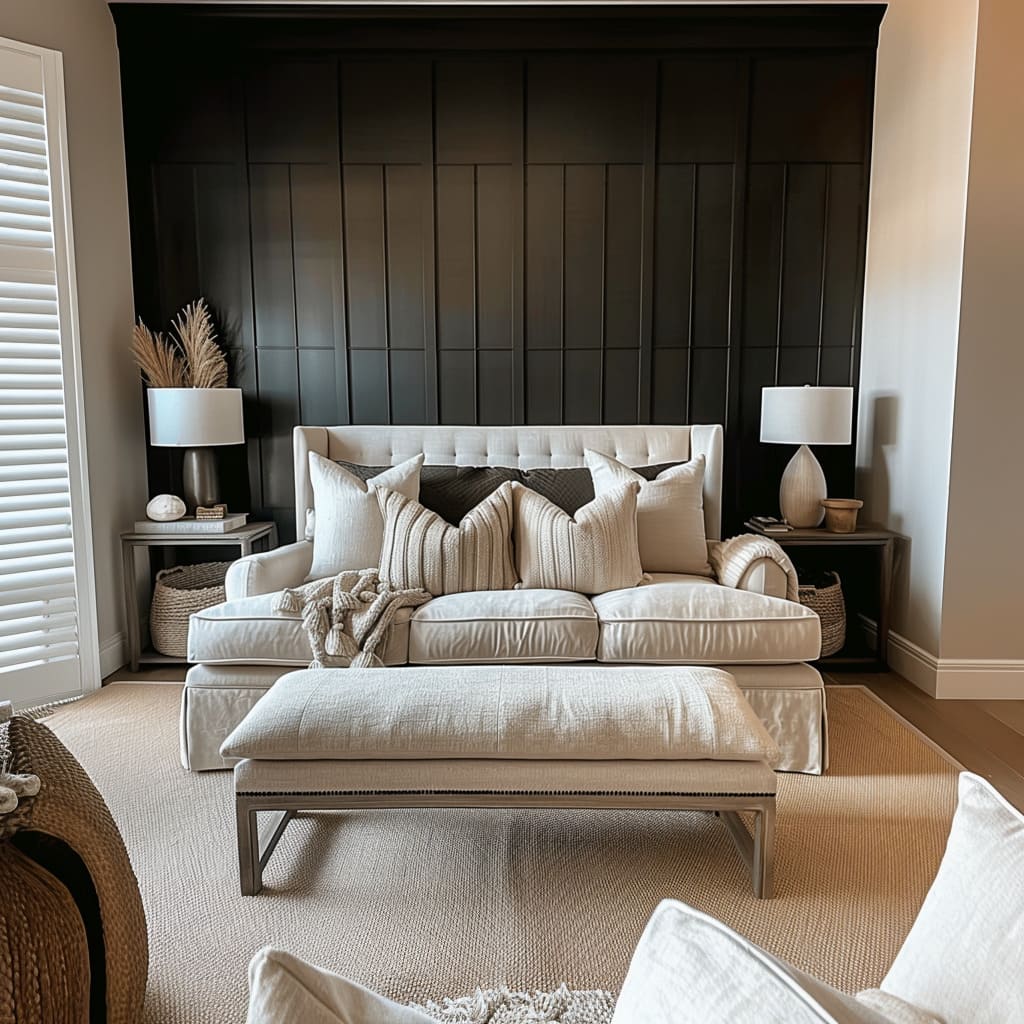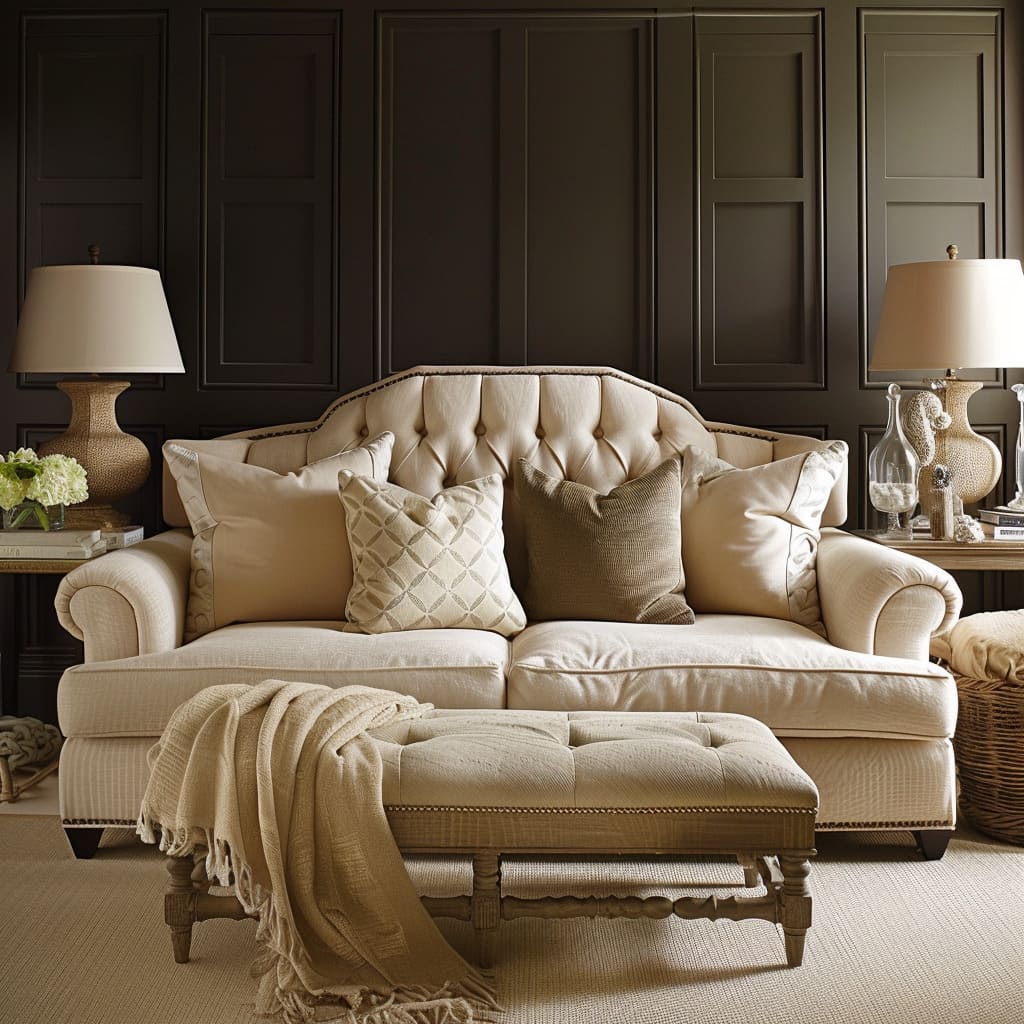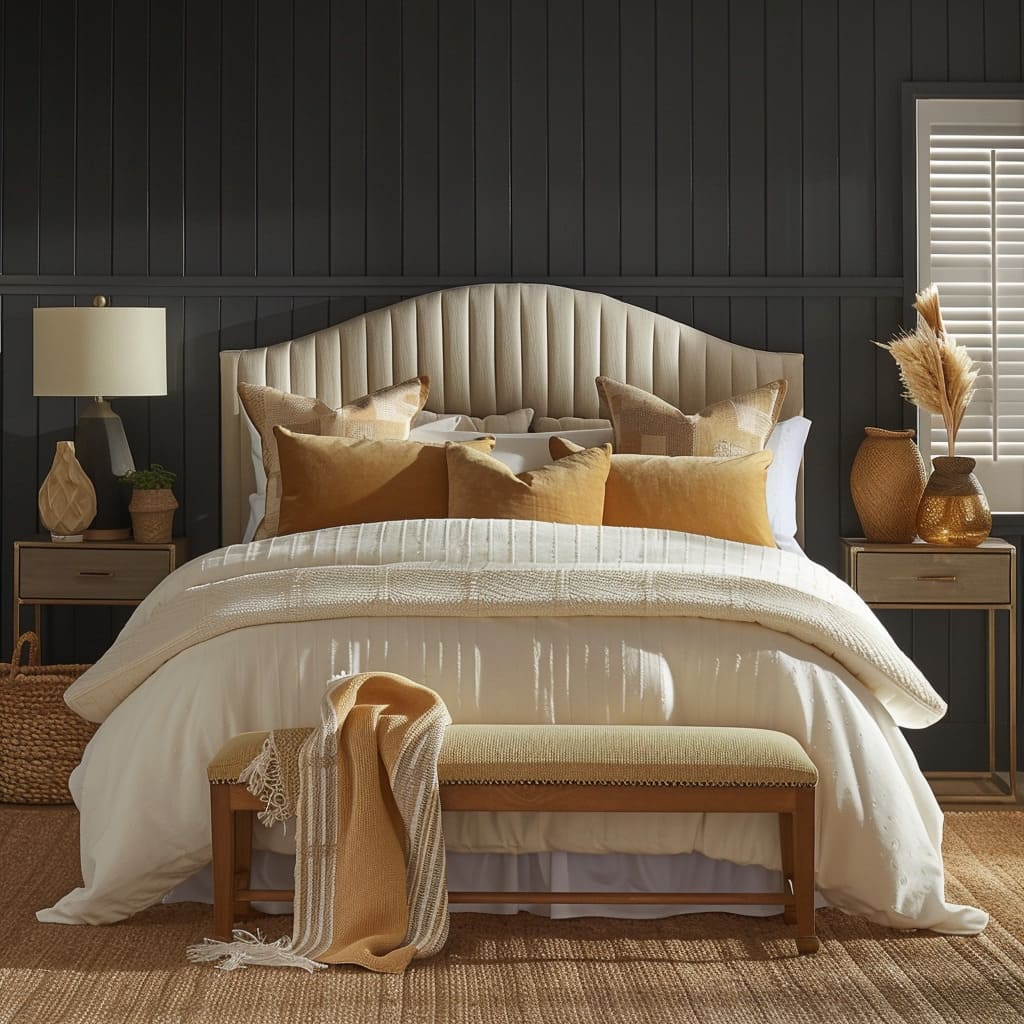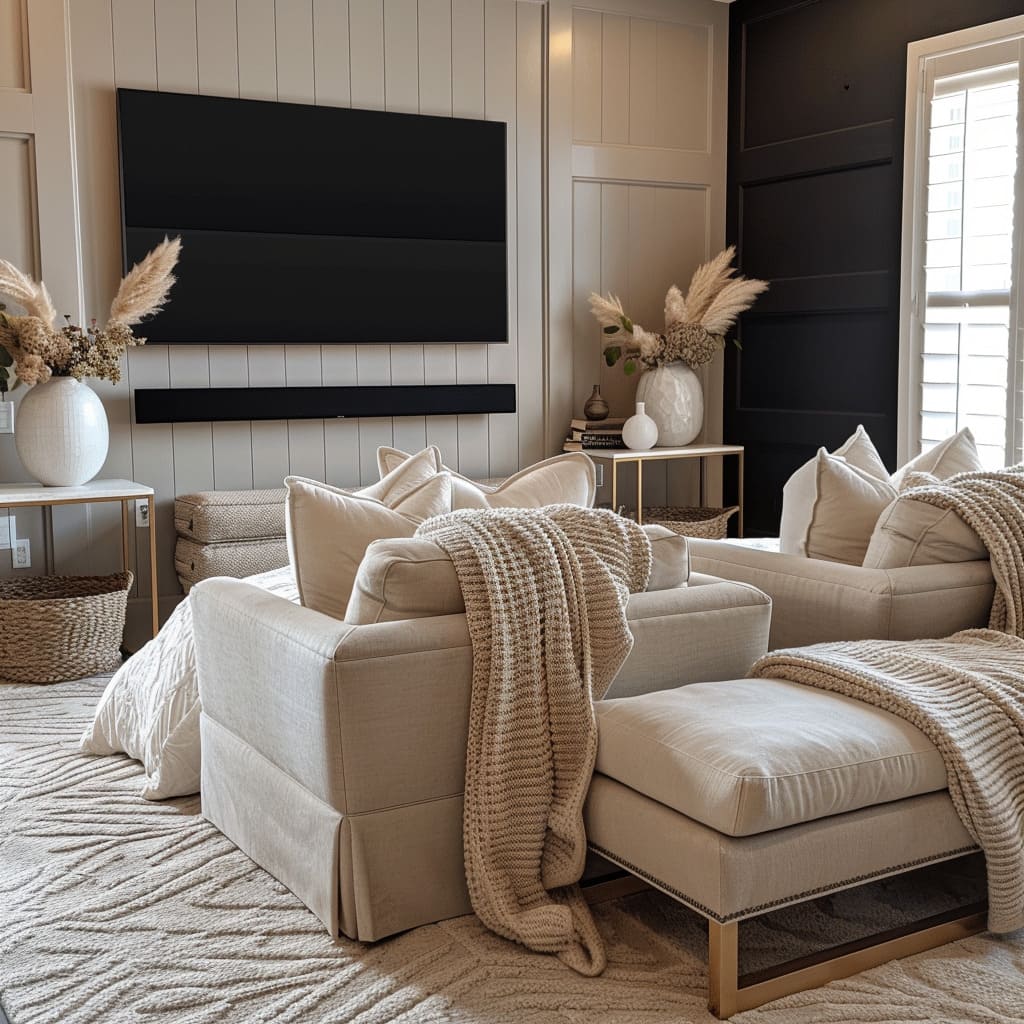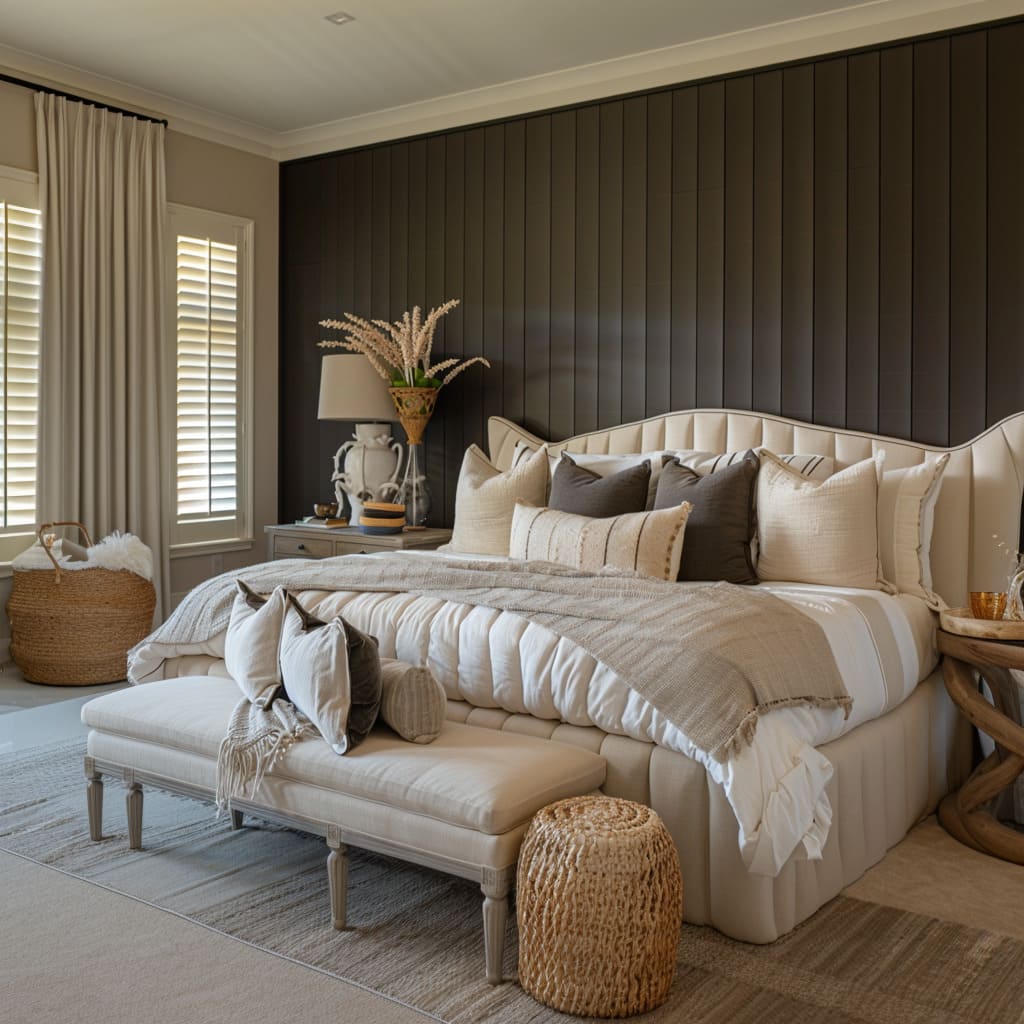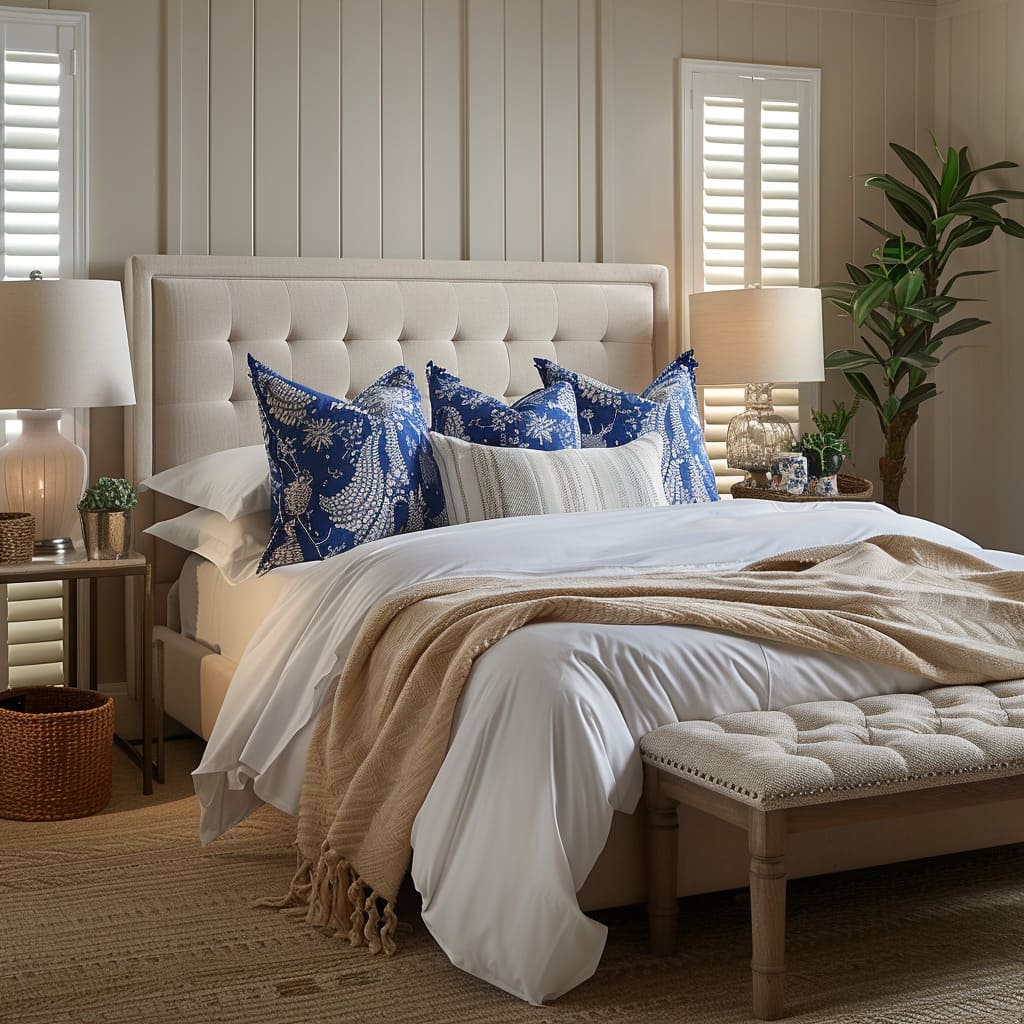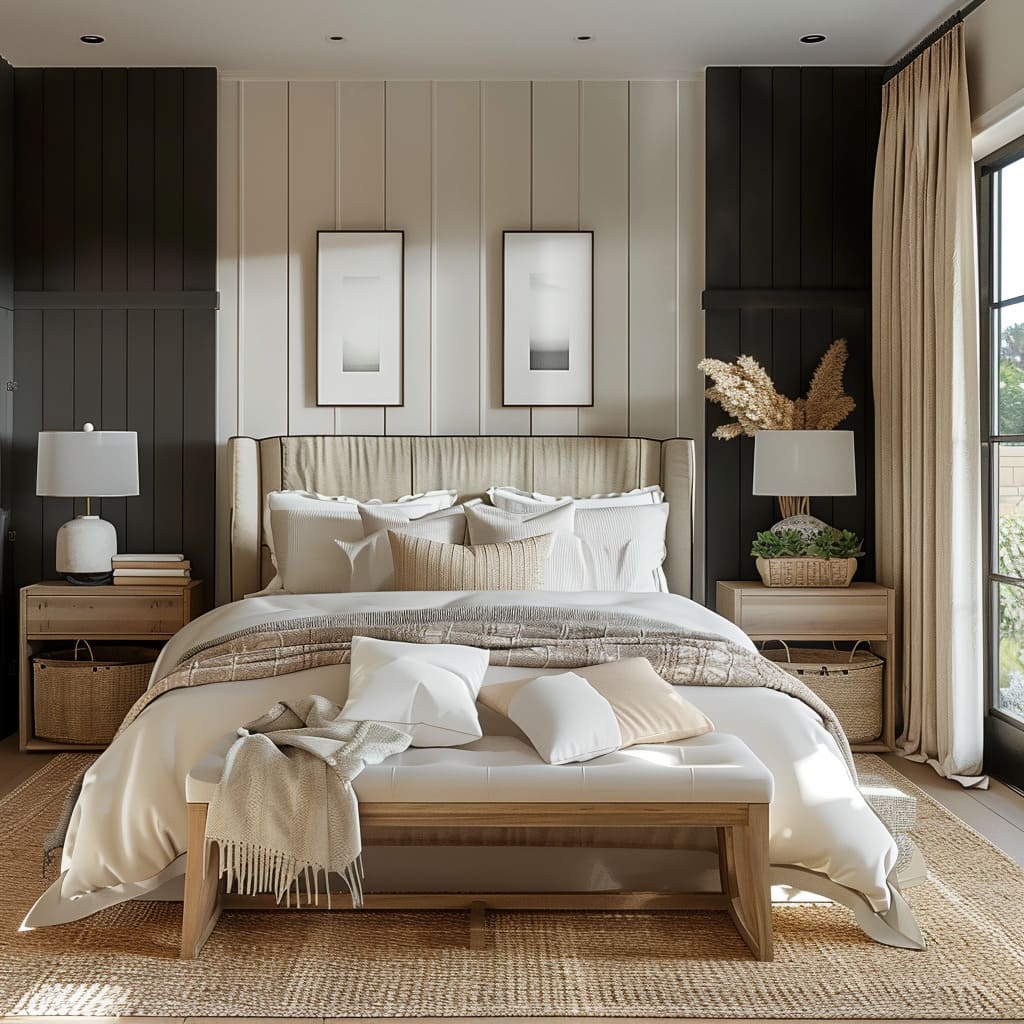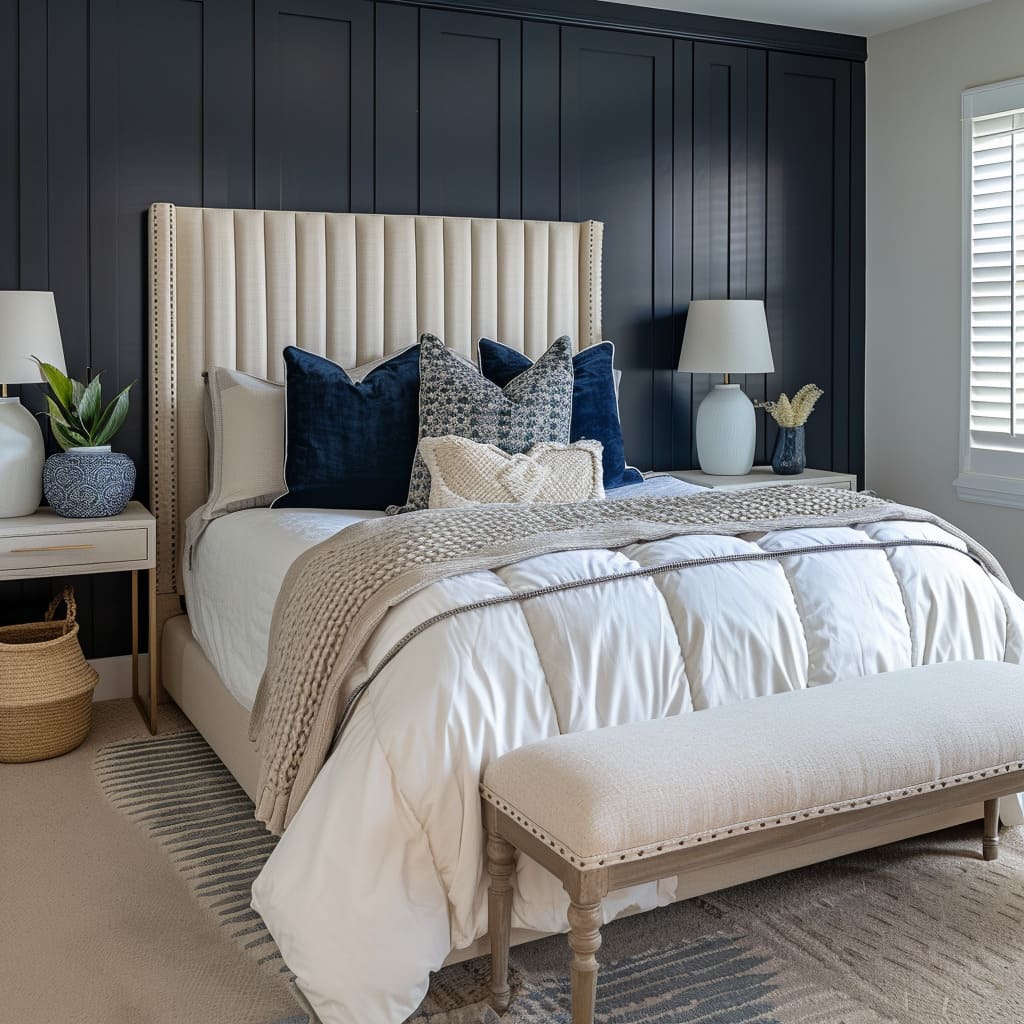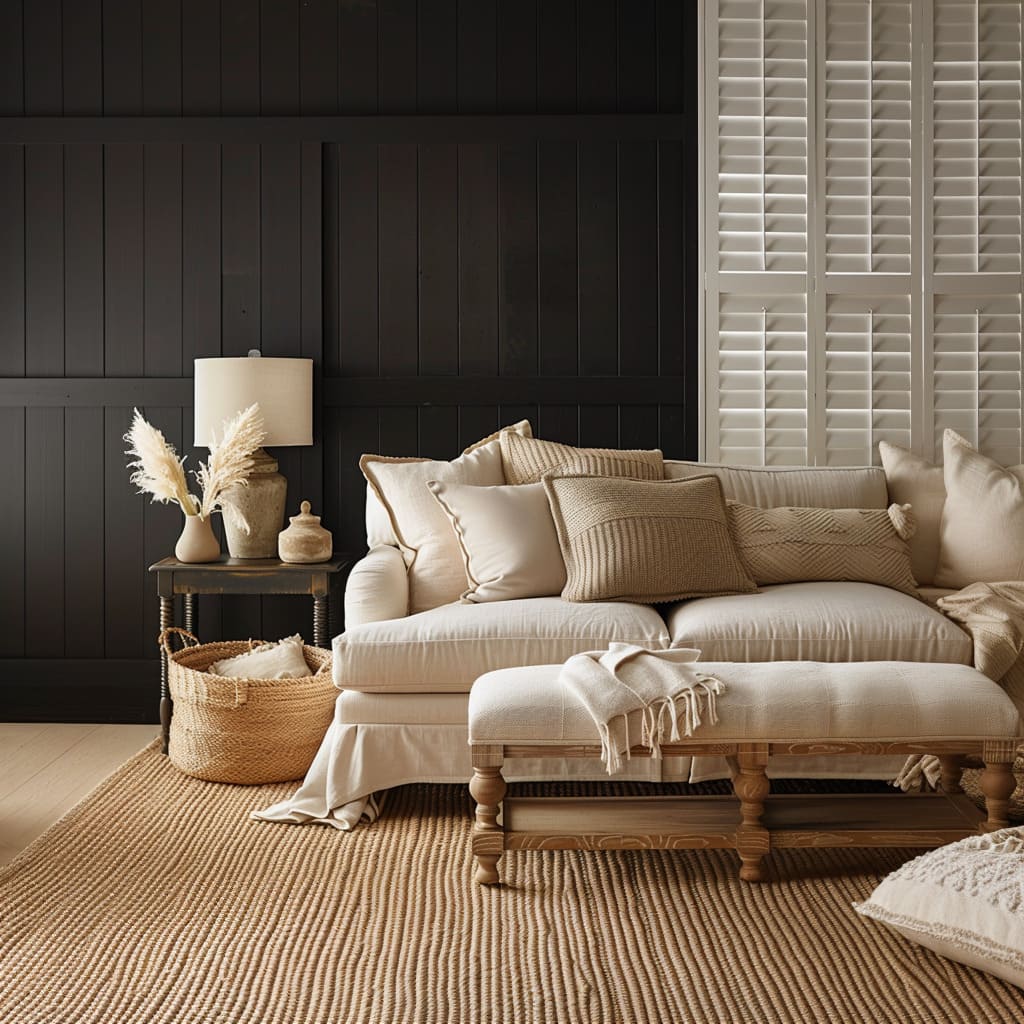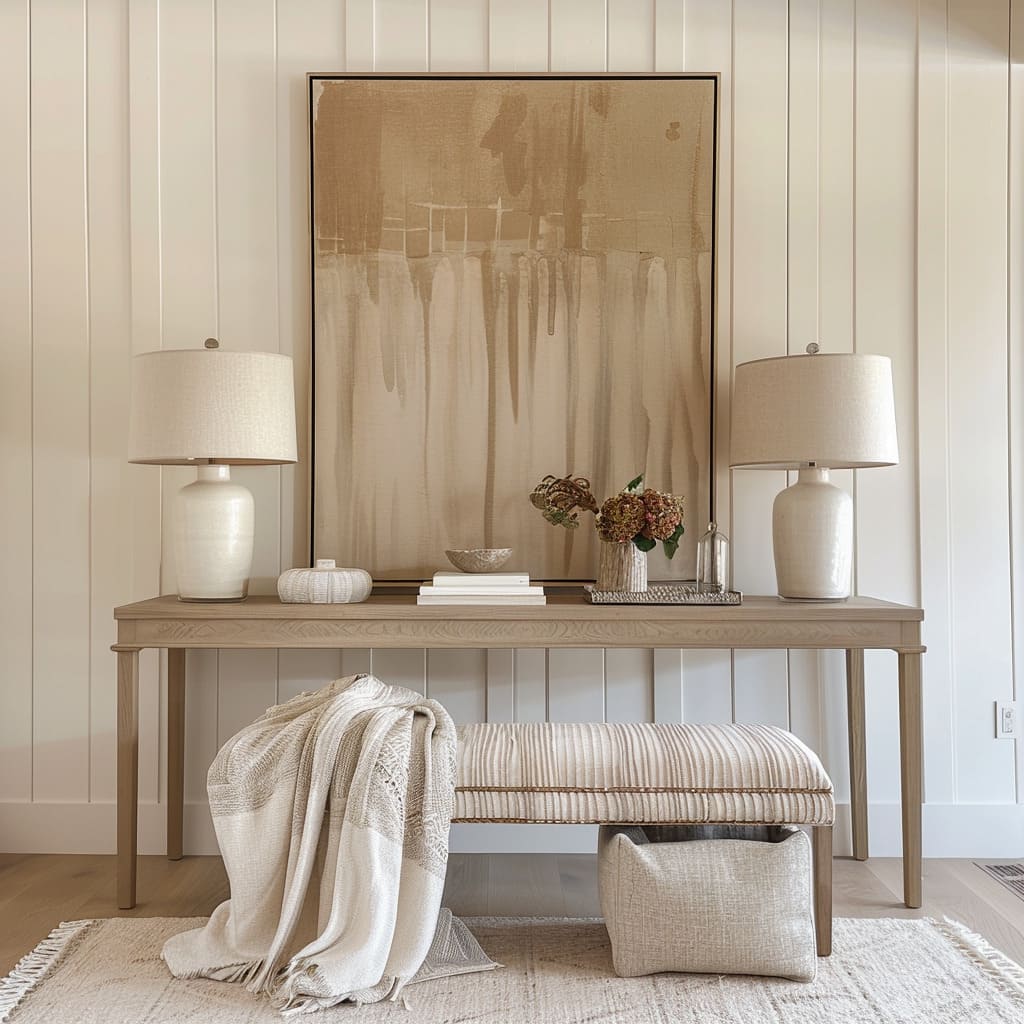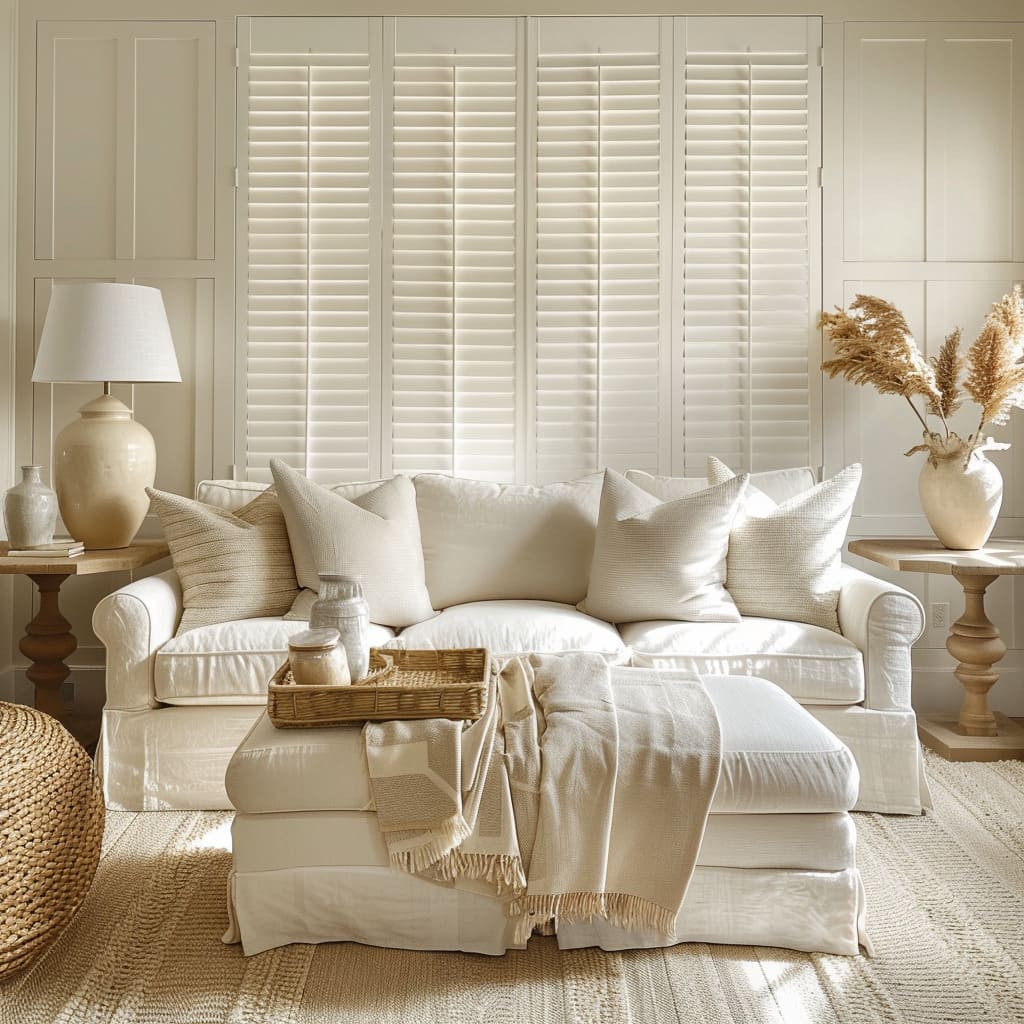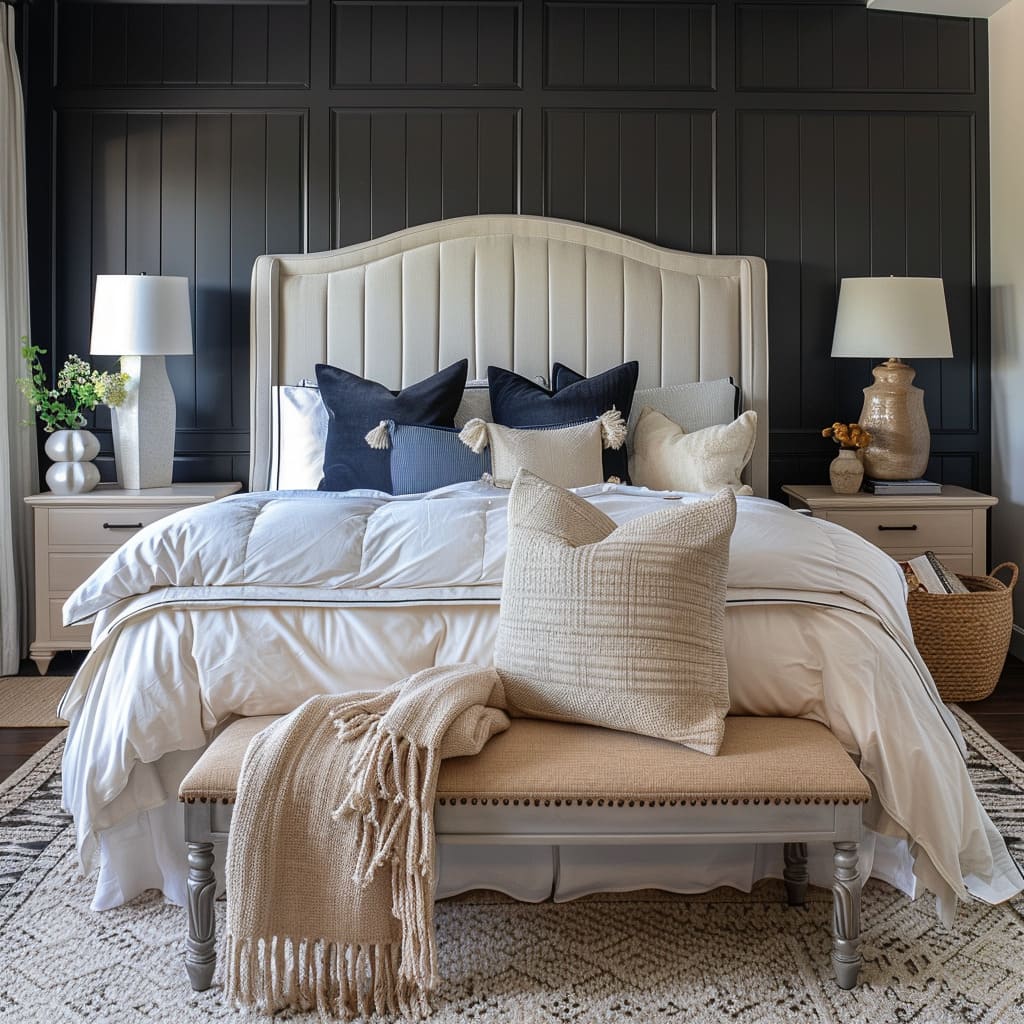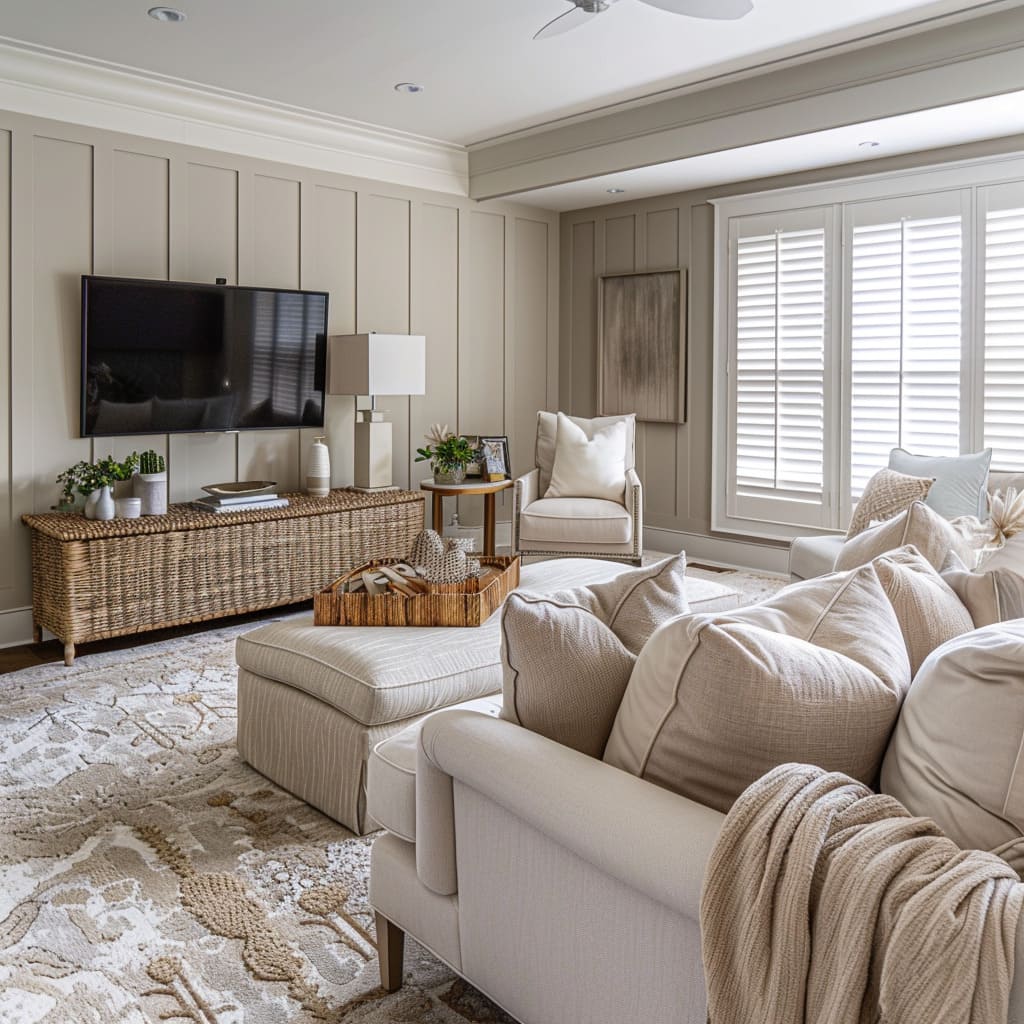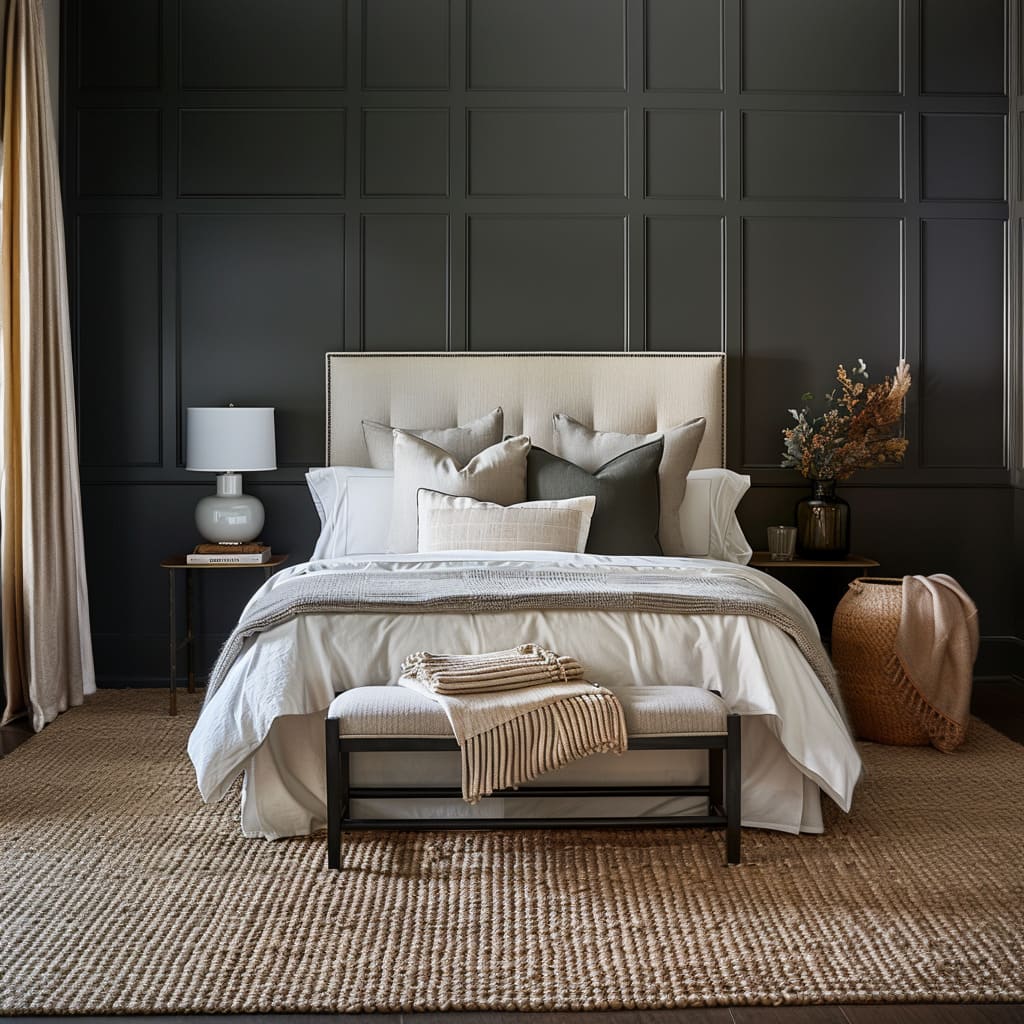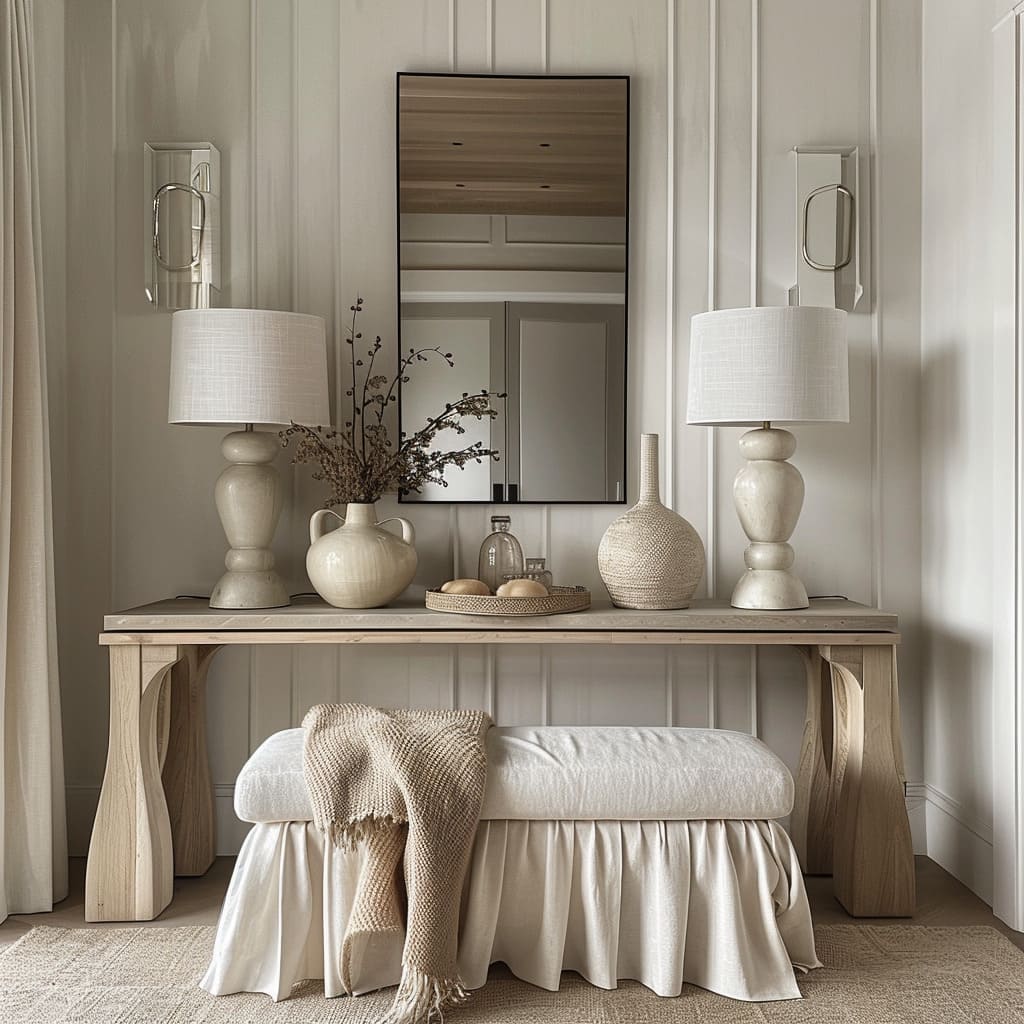The art of interior decoration takes center stage in creating spaces that are not only visually engaging but also deeply attuned to the inhabitants’ lifestyle and needs. This article delves into various aspects of interior design, exploring how different elements—from material contrasts and color dynamics to the integration of technology and natural accents—work together to craft environments that are both innovative and inviting.
Each section of this discourse offers an insightful look into how these design elements can transform everyday living spaces into realms of aesthetic delight and practical functionality.
Material Contrasts and Furnishing Choices
Focusing on the interplay of materials and furniture choices, this section underscores how contrasts and design choices contribute to the functionality and aesthetic appeal of the interior.
Contrasting Materials
The interplay between soft, plush fabrics and the stark rigidity of wood and metal frames forms a tactile narrative throughout the space.
This contrast not only enhances sensory engagement but also visually segments the room, defining distinct areas without the need for physical partitions. The strategic juxtaposition of these materials adds a dynamic quality to the environment, making each texture stand out while achieving a harmonious overall look.
Visually Light Furniture
Light-colored fabrics and slender furniture frames play a crucial role in fostering a spacious atmosphere. These pieces do not overpower the visual space but rather complement and blend seamlessly with the lighter elements of the room’s palette.
The choice of slim, understated frames helps maintain an uncluttered appearance, promoting a sense of calm and order. This approach not only maximizes the perceived space but also aligns perfectly with the overarching theme of understated sophistication.
Casual Seating Options
The inclusion of poufs and soft ottomans introduces a versatile, laid-back element to the living areas, inviting inhabitants to relax and unwind. These pieces serve as both functional seating options and playful accents that soften the more structured outlines of traditional furniture.
Their placement in the room encourages informal gatherings and spontaneous interactions, adding a layer of sociability to the space. Moreover, the choice of materials and colors for these seating options remains consistent with the room’s subdued and harmonious color scheme, ensuring they integrate smoothly without disrupting the aesthetic flow.
Through these design elements, the interior not only achieves a balance between beauty and utility but also creates an inviting space that appeals to both the senses and practical needs. The careful selection and placement of contrasting materials and furnishings enhance the spatial dynamics, making the environment both appealing and comfortable.
Color Dynamics and Artistic Expression
This section delves into the strategic use of color schemes and artistic elements that effectively influence the ambiance and continuity of the space. It reflects on how deliberate choices in hues and art consolidate the visual experience, ensuring both harmony and striking contrasts.
Consistent Color Blocking
The deliberate use of deep blacks and greys as backdrops in certain zones establishes a dramatic contrast with the predominantly light-toned furnishings. This technique not only delineates spaces but also highlights key furniture and decor elements, allowing them to stand out as focal points.
The boldness of dark walls acts as a frame, drawing attention to the carefully curated objects against them, from plush sofas to elegantly understated decor.
Subtle Color Accents
These are not random but are thoughtfully placed to draw the eye and break the monotony of neutral backgrounds.
Darker tones, appearing in cushions, throws, and decorative items, act as punctuation in the visual flow of the room. This method not only adds depth to the design but also guides the viewer’s gaze through the space, creating points of interest that tie the different components of the room together.
Monochromatic Artwork
By limiting artwork to monochromatic schemes, there’s a clear focus on form and texture rather than color, which resonates with the room’s overall minimalist aesthetic. This approach not only reinforces the color scheme but also introduces a subtle variety through different shades and tints of a single hue, offering visual relief without disturbing the room’s tranquil feel.
The simplicity of these art pieces emphasizes a clean and uncluttered environment, allowing each work to speak softly yet effectively.
Focused Color Palette
Restricting the color palette to a few closely related shades enhances not just the calmness but also the unity of the home.
This choice ensures that each room flows seamlessly into the next, with color acting as a subtle guide that leads one naturally through different areas. The cohesive color scheme fosters a sense of continuity and order, making the home feel like a singular, unified space rather than a collection of individual rooms.
Through these elements, the design not only achieves a visually stimulating environment but also ensures that the space remains relaxing and integrated. The strategic use of color and art enhances both the aesthetic quality and the functional harmony of the interior, creating an inviting atmosphere that resonates throughout the home.
Structural and Decorative Enhancements
This segment highlights how architectural features and decorative elements not only define the spatial boundaries but also contribute significantly to the aesthetic value and character of the interiors. These features are central to infusing depth and personality into each room, crafting an environment that feels both defined and welcoming.
Prominent Use of Paneling
The strategic use of paneling, both vertical and horizontal, across various rooms provides a structural depth that transforms plain walls into features of interest. This paneling is not merely functional but is designed to draw the eye, adding a geometric aesthetic that complements the modern yet timeless vibe of the spaces.
The contrast between the panel colors and the softer furnishings enhances this effect, making the walls themselves works of art.
Rustic Touches
Incorporating elements like woven baskets and rustic pottery serves to soften the modern edges of the rooms, introducing a touch of traditional charm.
These elements are carefully chosen to echo the natural color palette and materials, bridging the gap between old-world rustic and contemporary chic. The texture of these items adds a layer of visual and tactile warmth, making the spaces feel more lived-in and cozy.
Decorative Trays and Bowls
Positioned thoughtfully on tables and countertops, these items are more than just decorative—they are integral to the design language of the home. Whether holding collections of objects or standing alone, these trays and bowls anchor the decor, creating points of interest that draw the observer’s eye across the room.
Their materials and finishes are chosen to complement the surrounding color and texture themes, integrating seamlessly into the overall decor.
Understated Decorative Pieces
The careful selection of larger, but fewer, decorative items ensures that each piece stands out without overcrowding the space.
This approach allows each item to make a statement in its own right, contributing to the narrative of the space without causing visual clutter. These pieces often carry a minimalist design that emphasizes form and material, aligning with the clean and refined aesthetic of the overall interior.
Illumination and Transparency
This section examines the thoughtful integration of lighting and window treatments that significantly influence the ambiance, mood, and perceived spaciousness of the interiors. Strategic illumination and transparency are key in crafting an environment that feels both welcoming and visually expansive.
Accent Lighting
The strategic placement of smaller lamps alongside central lighting fixtures creates layers of light that enhance the overall warmth and texture of the rooms. These lamps are not just supplementary light sources but also serve as artistic elements that contribute to the decor’s subtlety and depth.
By varying the intensity and positioning of these lights, the space can transition smoothly from a bright and energetic atmosphere during the day to a soft and serene environment in the evenings.
Minimal Window Treatments
The use of minimal window treatments supports a design ethos that prioritizes natural light and visual openness.
This choice maximizes the inflow of daylight, which not only brightens the space but also makes it appear larger and more open. The light window dressings ensure that the connection between indoor and outdoor spaces is not hindered, while still providing necessary privacy and comfort.
The gentle movement of light through these treatments adds a dynamic quality to the rooms throughout the day.
The combined effect of accent lighting and minimal window treatments facilitates a seamless interplay between light and space, enhancing both the functionality and aesthetic appeal of the rooms. This approach to lighting design not only optimizes natural light but also carefully curates the artificial lighting to complement the natural rhythms of the day, ensuring that each room is showcased at its best.
Textural and Visual Comfort
This section explores how the deliberate layering of textures and soft furnishings enhances the tactile and visual appeal of the interiors, creating a welcoming and comforting environment. The thoughtful arrangement of these elements plays a crucial role in defining the spaces’ character and warmth.
Plush Throw Blankets
The strategic placement of soft, plush throw blankets over sofas and chairs not only increases the comfort level but also introduces a visual softness that invites relaxation. These throws vary in material, from knitted to fleece, each adding a distinct touch of coziness.
The way these blankets are draped casually yet artfully contributes to an effortless aesthetic, blending functionality with style.
Textured Cushions
Employing a range of textured cushions enhances the dynamic of the seating areas, introducing comfort and style.
These cushions feature varied textures such as ribbed, tufted, and woven fabrics, which interact beautifully with both natural and artificial light, creating interesting shadows and highlights. The choice of neutral shades ensures that these textural details stand out without overwhelming the space, serving as subtle yet effective complements to the overall decor.
Elongated Drapery
The use of elongated drapery emphasizes not only the verticality and scale of the rooms but also adds a layer of elegance and grace. These floor-to-ceiling curtains frame the windows perfectly, softening the ingress of natural light and enhancing the space’s fluidity and continuity.
The fabric’s movement adds an ethereal quality to the room, responding delicately to breezes and subtly altering the room’s lighting and mood throughout the day.
Use of Throws and Textiles
Integrating various textiles such as throws, rugs, and cushions not only enhances the textural richness of the space but also ties together the decor elements.
The placement of textured rugs on the floor anchors the furniture, while the throws and cushions create a cohesive look that flows through the room. This layering of different textile types enriches the sensory experience, making the space both visually engaging and comfortably livable.
These textural and visual elements collectively foster a serene and inviting atmosphere, where comfort and aesthetic appeal are harmoniously balanced. The careful selection and placement of textiles play a key role in crafting an interior that feels both refined and accessible, inviting one to linger and enjoy the tactile comforts of the home.
Integrative and Repetitive Elements
This section examines how the incorporation of modern technology and consistent design motifs across various spaces not only enhances functionality but also maintains a cohesive and aesthetically pleasing environment throughout the home.
Sleek Modern Technology
The integration of modern technology, such as flat-screen TVs and sound systems, is done with precision to ensure that these elements complement the interior design rather than disrupt it. These technologies are often embedded into custom-built panels or subtly placed within the layout to maintain the clean lines and refined aesthetic of the space.
The thoughtful positioning allows for easy access and use without detracting from the room’s visual harmony, ensuring that technology adds convenience while blending effortlessly with the decor.
Repetitive Decor Elements
The use of recurring decorative items such as pottery, lamps, and similar art pieces throughout the home establishes a visual linkage between different areas, enhancing the sense of unity and flow.
This repetition is not merely aesthetic but serves a functional purpose by creating a familiar and predictable environment that is easy to navigate and visually soothing. Each item is carefully selected to reflect the home’s overall design theme, ensuring that even as motifs repeat, they always feel fresh and relevant.
The strategic placement of these repetitive elements also allows for a narrative to develop within the home’s decor, where each piece contributes to a larger story of style and function. The consistency in decor helps anchor the design, providing a stable and harmonious backdrop against which the more dynamic aspects of daily life unfold.
Through these integrative strategies, the home not only functions efficiently with the inclusion of modern technologies but also achieves a stylistic coherence that feels intentional and carefully curated. The repetition of key decorative elements across different spaces fosters a comforting consistency, making the environment both aesthetically unified and welcoming.
Natural and Floral Accents
This section delves into how the incorporation of natural elements and floral designs not only brings vitality and a refreshing touch of nature indoors but also elevates the aesthetic and spatial feel of the environment. These elements are thoughtfully integrated to enhance the interaction between the indoor space and natural beauty.
Decorative Vases and Florals
The strategic placement of vases adorned with dried florals and greenery plays a crucial role in introducing natural textures and colors into the home. These arrangements are carefully curated to complement the interior’s color scheme and design ethos, providing a visual softness that contrasts with the more structured furnishings.
The choice of dried flowers ensures lasting beauty with minimal maintenance, while still offering the organic, tactile appeal of fresh blooms.
The use of varying heights and styles of vases adds an artistic layer to the decor, creating focal points that naturally draw the eye and invite closer inspection. These floral displays are not just decorative but are positioned to enhance the sense of space and openness within the room.
Placed on window sills, tables, or even bookshelves, they bridge the gap between the built environment and the outdoors, making the rooms feel more expansive and vibrant.
Moreover, the incorporation of these elements fosters a connection with nature, which is known to have calming effects, enhancing the overall well-being of the inhabitants. The subtle fragrances of the florals can also subtly perfume the air, contributing to a sensory experience that complements the visual aesthetics.
Through these natural and floral accents, the interior becomes a dynamic space that not only looks inviting but also actively engages the senses, creating an atmosphere where nature and design coexist harmoniously. This approach not only beautifies the space but also enhances the quality of living, making the home a sanctuary that feels both alive and serene.
Concluding our exploration of interior design, we reflect on how each element discussed contributes to creating a harmonious and functional living environment. From the strategic use of materials and colors to the thoughtful integration of technology and natural motifs, interior design proves to be a profound expression of personal taste and practicality.
The cohesive blend of these elements not only enhances the living experience but also elevates the space to more than just a functional area—it becomes a personal retreat, echoing the uniqueness of its occupants. As we consider the future of interior design, it becomes evident that the potential for creativity is boundless, with each choice and innovation paving the way for new possibilities in the aesthetic and functional enhancement of our personal spaces.

